Elena Hight: making the transition
History maker and X Games champion Elena Hight talks to us about moving on from an illustrious halfpipe career: “You know, in 2018 I did my last halfpipe contest. And I didn’t know it was going to be my last halfpipe contest.”
Blank Canvas is the latest big mountain film from acclaimed creator Jeremy Jones and goes on general release tomorrow. We talk to the film’s protagonist Elena Hight about life beyond the halfpipe.
By Paul McGee, Head Feature Writer. December 7 2020
You’re sat at your desk putting the finishing touches on the latest sales presentation when the boss calls.
He wants a little tête-à-tête because frankly, your pitches aren’t yielding the conversion rates they used to. To be honest, none of your work really shines any more and well, there’s a whole raft of younger guys at the top of their game so it’s time to call it a day.
What’s this? you wonder. You’re getting moved to another department? Fired? You’ll have to find a job with someone else?
No, no, he tells you. This is the end. Your career’s over. No job here or anywhere. That’s it, finito. But come on, you’ve had a good run, don’t beat yourself up over it.
The problem is, you’re barely out of your twenties. Just imagine.
This is the scenario faced by athletes since the dawn of competitive sport. Theirs is a job where longevity means fifteen years if you’re lucky. The arena is littered with them: footballers, boxers, runners, and yes, participants from across the spectrum of winter sport – the once-greats who’ve come to the end of the road and found it drops off a cliff.
The professional sport business is hard. Hard to get into, hard to do, and hard to let go of. Because all too often, it doesn’t really lead anywhere. Athletes need sport like the rest of us need food and water. It’s in their blood, and when the curtain comes down, it’s like cutting off the fuel supply.
You’re sat at your desk putting the finishing touches on the latest sales presentation when the boss calls.
He wants a little tête-à-tête because frankly, your pitches aren’t yielding the conversion rates they used to. To be honest, none of your work really shines any more and well, there’s a whole raft of younger guys at the top of their game so it’s time to call it a day.
What’s this? you wonder. You’re getting moved to another department? Fired? You’ll have to find a job with someone else?
No, no, he tells you. This is the end. Your career’s over. No job here or anywhere. That’s it, finito. But come on, you’ve had a good run, don’t beat yourself up over it.
The problem is, you’re barely out of your twenties. Just imagine.
This is the scenario faced by athletes since the dawn of competitive sport. Theirs is a job where longevity means fifteen years if you’re lucky. The arena is littered with them: footballers, boxers, runners, and yes, participants from across the spectrum of winter sport – the once-greats who’ve come to the end of the road and found it drops off a cliff.
The professional sport business is hard. Hard to get into, hard to do, and hard to let go of. Because all too often, it doesn’t really lead anywhere. Athletes need sport like the rest of us need food and water. It’s in their blood, and when the curtain comes down, it’s like cutting off the fuel supply.
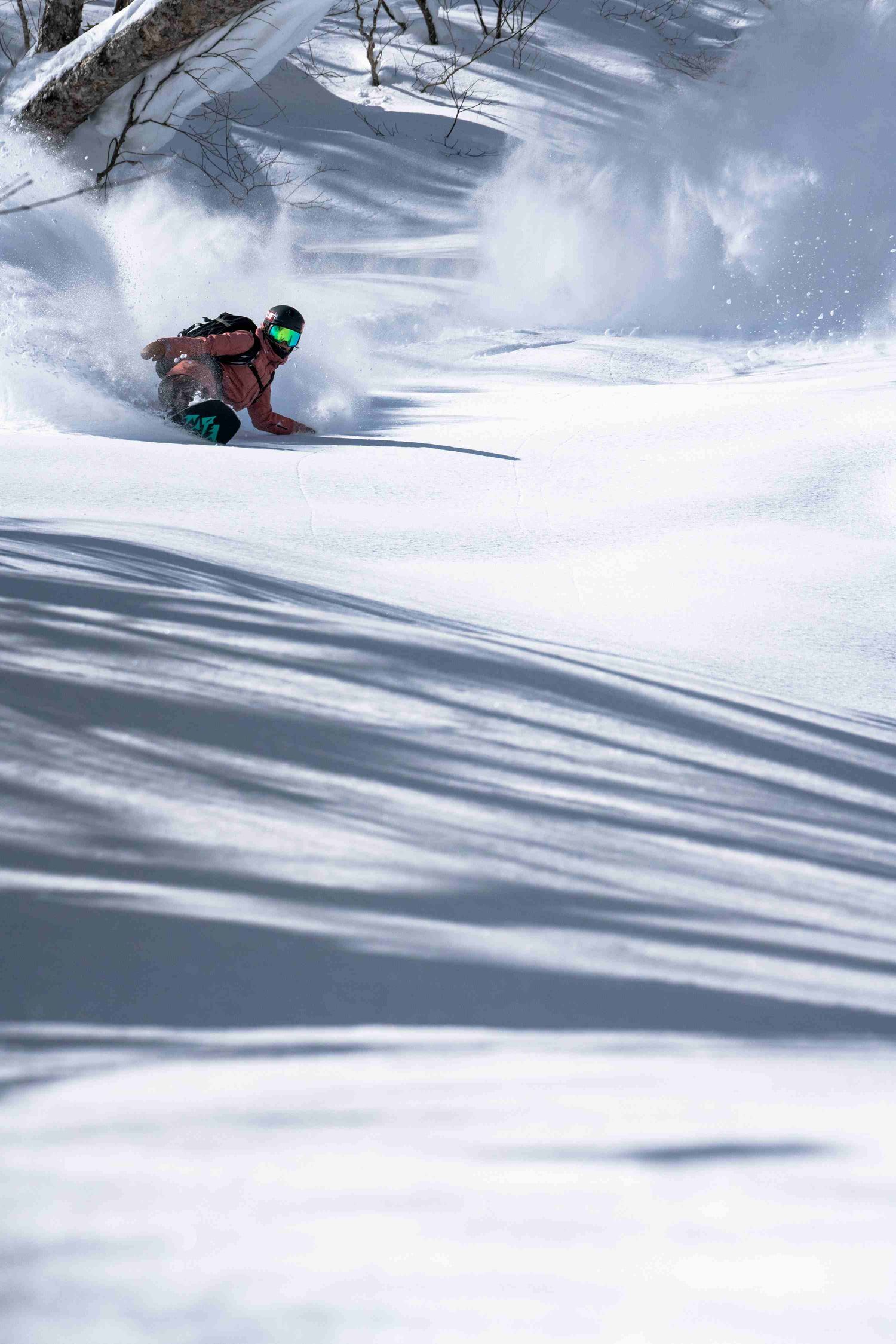
Elena Hight is the exception to the rule.
She’s that athlete who’s managed to navigate the perilous transition phase, who’s walked up to the dark chasm and stepped out into the void.
Because Elena Hight is in the process of moving on. She’s progressing from an illustrious snowboard halfpipe career, and while her new journey is only just beginning, the road ahead looks good. And that’s saying something, because hers wasn’t an easy departure. Let’s face it, Elena’s record in the halfpipe is anything but ambiguous. She is both a decorated champion and a trail blazer, a cynosure for women’s snowboarding. Snowboarding for both sexes as it happens.
Aged just 13 Elena Hight became the first female to land a 900 in competition. Then in 2012, the 22 year old Elena Hight became the first woman to land a double backside alley-oop rodeo in the halfpipe. To prove it wasn’t a fluke, she went on to repeat it at Winter X Games XVII a year later, becoming the first rider, male or female, to land one in competition.
Elena Hight is the exception to the rule.
She’s that athlete who’s managed to navigate the perilous transition phase, who’s walked up to the dark chasm and stepped out into the void.
Because Elena Hight is in the process of moving on. She’s progressing from an illustrious snowboard halfpipe career, and while her new journey is only just beginning, the road ahead looks good. And that’s saying something, because hers wasn’t an easy departure. Let’s face it, Elena’s record in the halfpipe is anything but ambiguous. She is both a decorated champion and a trail blazer, a cynosure for women’s snowboarding. Snowboarding for both sexes as it happens.
Aged just 13 Elena Hight became the first female to land a 900 in competition. Then in 2012, the 22 year old Elena Hight became the first woman to land a double backside alley-oop rodeo in the halfpipe. To prove it wasn’t a fluke, she went on to repeat it at Winter X Games XVII a year later, becoming the first rider, male or female, to land one in competition.
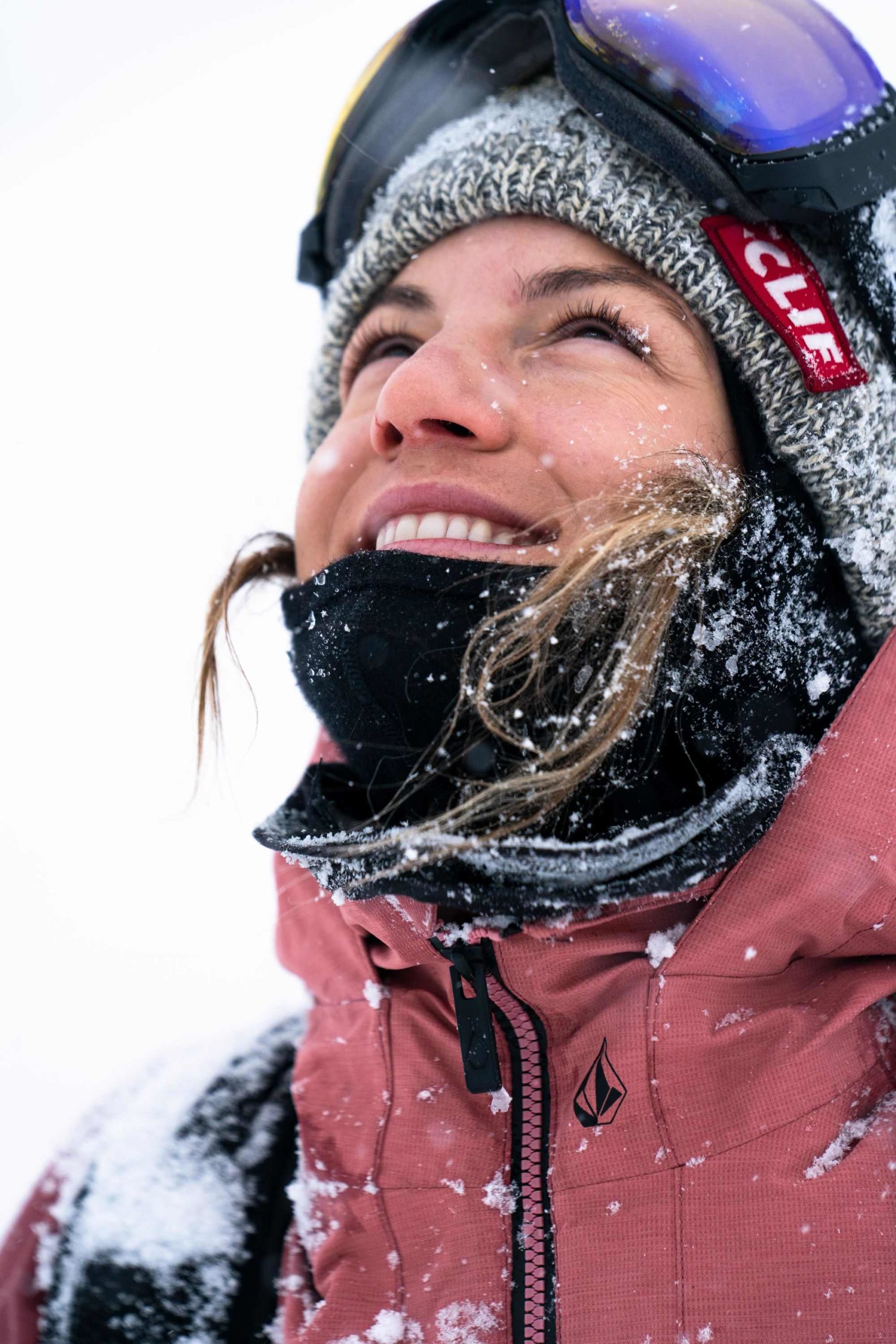
If like me you spend more time on two planks, you’re probably not familiar with the double backside alley-oop rodeo. I mean I know roughly, I just don’t know what goes where and when.
“Yeah it’s maybe the longest trick name ever!” Elena says, putting me at ease for asking. “But for those who have a little bit of an understanding of halfpipe snowboarding, basically an alley-oop is when you’re spinning up the hill rather than down the hill, and backside is the direction that you’re spinning. In this case backside would typically be on your heel side wall, but because you’re spinning up the hill you’re actually doing it on your toe side wall. And then a rodeo is basically a backflip with a 180, and double just means you’re doing it all twice. So I’m doing a double backflip with a 180, spinning up the hill on my toe side wall.”
The thought of it is enough to make your head spin. To appreciate the full complexity of the trick, you really need to watch it in slow motion.
The gravity of Elena Hight’s achievement isn’t lost on her to this day.
“In 2013, the year or two before that was the rise of double corks in snowboarding. They went from being very, very rare to pretty much all of the top men in the sport doing them. And doing multiple double corks. So I really had set my mind on being one of the first females to do it, because no one was even trying them at that point. So I worked really hard for almost a year to prep and learn that trick. And to land it first try in the contest was my dream come true and I was just elated. It was a lot of hard work from me and my coaches, and really everyone around me, and I had a lot of support. And so having it all come together in a contest like that was just the best case scenario.”
If like me you spend more time on two planks, you’re probably not familiar with the double backside alley-oop rodeo. I mean I know roughly, I just don’t know what goes where and when.
“Yeah it’s maybe the longest trick name ever!” Elena says, putting me at ease for asking. “But for those who have a little bit of an understanding of halfpipe snowboarding, basically an alley-oop is when you’re spinning up the hill rather than down the hill, and backside is the direction that you’re spinning. In this case backside would typically be on your heel side wall, but because you’re spinning up the hill you’re actually doing it on your toe side wall. And then a rodeo is basically a backflip with a 180, and double just means you’re doing it all twice. So I’m doing a double backflip with a 180, spinning up the hill on my toe side wall.”
The thought of it is enough to make your head spin. To appreciate the full complexity of the trick, you really need to watch it in slow motion.
The gravity of Elena Hight’s achievement isn’t lost on her to this day.
“In 2013, the year or two before that was the rise of double corks in snowboarding. They went from being very, very rare to pretty much all of the top men in the sport doing them. And doing multiple double corks. So I really had set my mind on being one of the first females to do it, because no one was even trying them at that point. So I worked really hard for almost a year to prep and learn that trick. And to land it first try in the contest was my dream come true and I was just elated. It was a lot of hard work from me and my coaches, and really everyone around me, and I had a lot of support. And so having it all come together in a contest like that was just the best case scenario.”

A lot of athletes, especially those who operate in the elite echelons, have these stand-out moments early in their careers and then – nothing. They are the shooting stars of their all-too-brief métiers. Think of all those tennis players who’ve won Wimbledon just once: 26 since the advent of the Open era in 1968.
But Elena Hight won’t be written into the annals of snowboard history as a one-hit wonder. She is a multiple X-Games medallist and the 2017 X-Games Champion. She’s won the US Open and scored three bronzes at the Winter Dew Tour. She is also a two-time Winter Olympian.
It’s not like pro halfpipe snowboarding was something Elena merely dabbled in. She has achieved a lot. A hell of a lot. I wonder if she can pick a standout moment.
“I would say I probably have two proudest moments. One, in 2012, I won the US Open. And I grew up watching that event. You know, it was one of the very first snowboard events. Most of my idols really came up through that event – the people who inspired me to really want to be a pro snowboarder and so, for that to come full circle, and to win that contest on its home turf in Vermont, that was just a really special moment in my career. And a little bit later on in 2017 I won X-Games. And that was something that I’d medalled in a few times and come within reach of the top spot, but had never gotten a gold medal there. So to finally get a gold medal there was like, a long time coming and just this really, really exciting moment for me.”
Elena is only 31 now. That prestigious gold medal came just three years ago and was all but inevitable – a culmination of spectacular results. To an outsider it might seem like there’s more in the tank. And perhaps there is. But somehow Elena has found peace with herself and with her decision to step into the unknown. She has moved away from the halfpipe (sort of) and found fulfillment beyond it.
How?
Injury? I wonder in some macabre eureka moment. The smashed up bones won’t be bolted in place any more and she’s had that difficult conversation with the team medic: get out of the halfpipe before it wrecks what’s left of your body. Perhaps, I wonder, Elena’s body quit on her before her resolve did. She wouldn’t be the first to go that way.
But I can wonder all I want.
“I think any extreme sport comes with its fair share of challenges, and injuries is high on the list. And honestly, I’ve been quite lucky in my career. I’ve had a lot of small injuries and not many big ones. But I’ve had quite a few concussions which is a whole problem on its own. And I’ve had one hip surgery. Overall I’ve had a lot of little things, but honestly I’d say the most painful thing I’ve ever had is a dislocated elbow which was not the worst thing, but one of the most painful things I’ve ever gone through. Elbows like to bend the way they like to bend. They’re not very happy when they’re trying to go the opposite way!”
A lot of athletes, especially those who operate in the elite echelons, have these stand-out moments early in their careers and then – nothing. They are the shooting stars of their all-too-brief métiers. Think of all those tennis players who’ve won Wimbledon just once: 26 since the advent of the Open era in 1968.
But Elena Hight won’t be written into the annals of snowboard history as a one-hit wonder. She is a multiple X-Games medallist and the 2017 X-Games Champion. She’s won the US Open and scored three bronzes at the Winter Dew Tour. She is also a two-time Winter Olympian.
It’s not like pro halfpipe snowboarding was something Elena merely dabbled in. She has achieved a lot. A hell of a lot. I wonder if she can pick a standout moment.
“I would say I probably have two proudest moments. One, in 2012, I won the US Open. And I grew up watching that event. You know, it was one of the very first snowboard events. Most of my idols really came up through that event – the people who inspired me to really want to be a pro snowboarder and so, for that to come full circle, and to win that contest on its home turf in Vermont, that was just a really special moment in my career. And a little bit later on in 2017 I won X-Games. And that was something that I’d medalled in a few times and come within reach of the top spot, but had never gotten a gold medal there. So to finally get a gold medal there was like, a long time coming and just this really, really exciting moment for me.”
Elena is only 31 now. That prestigious gold medal came just three years ago and was all but inevitable – a culmination of spectacular results. To an outsider it might seem like there’s more in the tank. And perhaps there is. But somehow Elena has found peace with herself and with her decision to step into the unknown. She has moved away from the halfpipe (sort of) and found fulfillment beyond it.
How?
Injury? I wonder in some macabre eureka moment. The smashed up bones won’t be bolted in place any more and she’s had that difficult conversation with the team medic: get out of the halfpipe before it wrecks what’s left of your body. Perhaps, I wonder, Elena’s body quit on her before her resolve did. She wouldn’t be the first to go that way.
But I can wonder all I want.
“I think any extreme sport comes with its fair share of challenges, and injuries is high on the list. And honestly, I’ve been quite lucky in my career. I’ve had a lot of small injuries and not many big ones. But I’ve had quite a few concussions which is a whole problem on its own. And I’ve had one hip surgery. Overall I’ve had a lot of little things, but honestly I’d say the most painful thing I’ve ever had is a dislocated elbow which was not the worst thing, but one of the most painful things I’ve ever gone through. Elbows like to bend the way they like to bend. They’re not very happy when they’re trying to go the opposite way!”
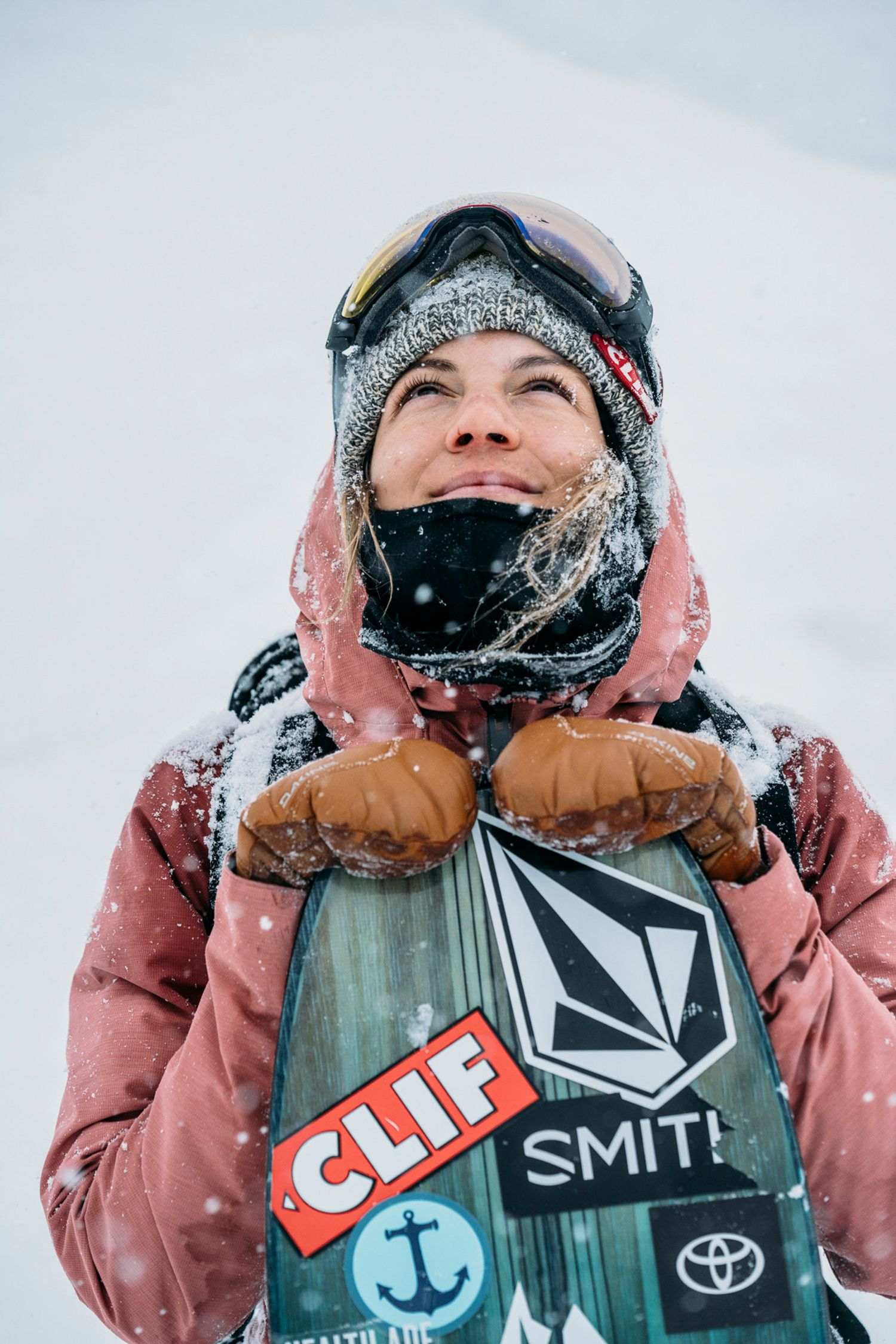
I’ve interviewed Julia Mancuso and winced as she related the pain of skiing with a condition called hip dysplasia. Mercedes Nicoll is a former guest here who’s talked to us about the horrifying and long-term injury she suffered in the snowboard halfpipe at Sochi 2014.
Elena’s injury list might be more extensive than most recreational snowboarders would put up with, but the truth is as she says it: she’s been lucky.
So while I want to ask why she’s moved on from competing in halfpipe, I’m more interested to know how.
Assuming she actually has moved on.
“You know, in 2018 I did my last halfpipe contest. And I didn’t know it was going to be my last halfpipe contest. I failed to qualify for the Olympics and that was something I was really focused on.”
So she was crushed, and entered a spiral of despair from which she has yet to emerge?
Actually, not. For an athlete like Elena Hight, it was simply time to change gear.
“After that I really kind of shifted all of my energy into riding the backcountry. I was invited on a couple of really life changing trips and realised that’s where I wanted to take my snowboarding, and to really continue to grow and evolve as a snowboarder and as a person. To start this new challenge would be the best way to do it. And so I did retire from competing – I do still love riding transition, so I get into the halfpipe whenever I can, but definitely not as much as I used to.”
Some of those life-changing trips resulted in big-name, big mountain films. And there’s another in the pipeline.
“Yeah, I had just finished up a film, Ode to Muir, with TGR – Teton Gravity Research – a production company, and they approached me knowing that I was retiring from half pipe. They wanted to tell this story of the transition, of me taking the leap into this avenue of snowboarding that I had never done before. And we kind of went back and forth but, super grateful for TGR for giving me the opportunity and seeing something in me that they wanted to make a film about. Basically Blank Canvas is a snowboard film first and foremost, but it follows my journey from being a competitive halfpipe rider into feeling this calling to go into the backcountry and following my heart there. And the people, all the riders along the way who have really helped me and are mentoring me – their stories. And yeah, a lot of good snowboarding.”
I’ve interviewed Julia Mancuso and winced as she related the pain of skiing with a condition called hip dysplasia. Mercedes Nicoll is a former guest here who’s talked to us about the horrifying and long-term injury she suffered in the snowboard halfpipe at Sochi 2014.
Elena’s injury list might be more extensive than most recreational snowboarders would put up with, but the truth is as she says it: she’s been lucky.
So while I want to ask why she’s moved on from competing in halfpipe, I’m more interested to know how.
Assuming she actually has moved on.
“You know, in 2018 I did my last halfpipe contest. And I didn’t know it was going to be my last halfpipe contest. I failed to qualify for the Olympics and that was something I was really focused on.”
So she was crushed, and entered a spiral of despair from which she has yet to emerge?
Actually, not. For an athlete like Elena Hight, it was simply time to change gear.
“After that I really kind of shifted all of my energy into riding the backcountry. I was invited on a couple of really life changing trips and realised that’s where I wanted to take my snowboarding, and to really continue to grow and evolve as a snowboarder and as a person. To start this new challenge would be the best way to do it. And so I did retire from competing – I do still love riding transition, so I get into the halfpipe whenever I can, but definitely not as much as I used to.”
Some of those life-changing trips resulted in big-name, big mountain films. And there’s another in the pipeline.
“Yeah, I had just finished up a film, Ode to Muir, with TGR – Teton Gravity Research – a production company, and they approached me knowing that I was retiring from half pipe. They wanted to tell this story of the transition, of me taking the leap into this avenue of snowboarding that I had never done before. And we kind of went back and forth but, super grateful for TGR for giving me the opportunity and seeing something in me that they wanted to make a film about. Basically Blank Canvas is a snowboard film first and foremost, but it follows my journey from being a competitive halfpipe rider into feeling this calling to go into the backcountry and following my heart there. And the people, all the riders along the way who have really helped me and are mentoring me – their stories. And yeah, a lot of good snowboarding.”
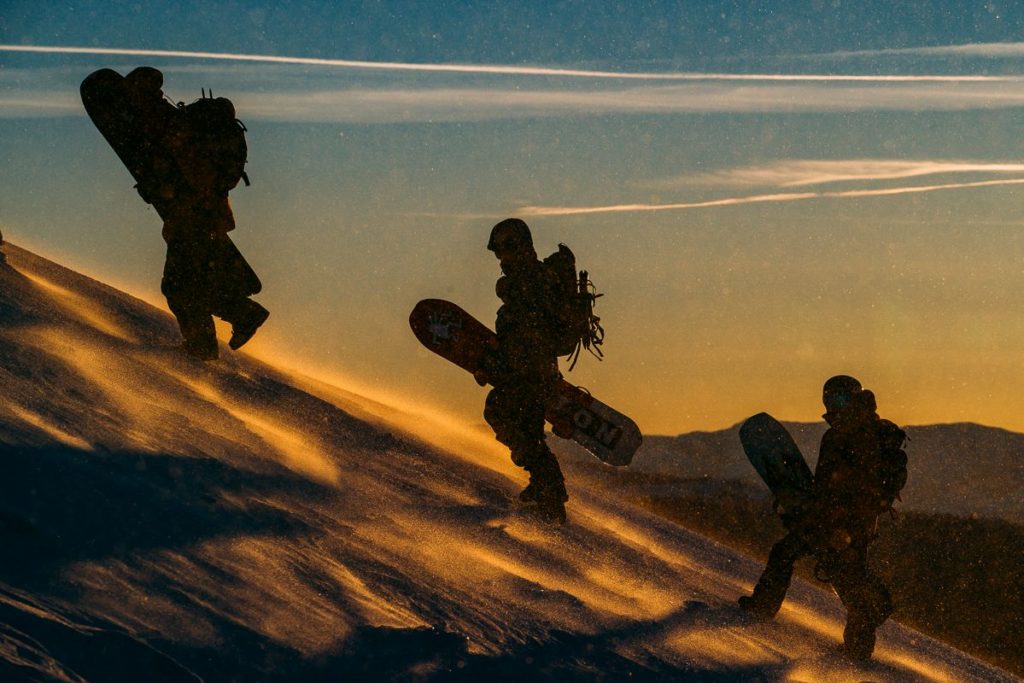
A picture of Elena is forming, an understanding of how she has made that transition where so many before her have foundered. Blank Canvas doesn’t just explore that concept – it is in itself part of the structure in Elena’s life story.
“Yeah it definitely has the story element. My intention behind making the film was to capture the real and raw actual happenings of me leaving something I was so accustomed to and so comfortable in with halfpipe riding, and really feeling this calling and following my heart into the backcountry, and the ups and downs with that. I want to be able to inspire the viewer to be able to take a look at their lives and follow those callings. And despite the idea that you might fail along the way, knowing that facing those dreams is what life is for.”
You don’t have to be a big mountain rider to get something out this film. It’s a story for everyone.
“I sure hope so. That’s my intention so we’ll see, hopefully it translates.”
Blank Canvas is the second film that Elena has worked on with the iconic on-screen snowboarder Jeremy Jones. The first was Ode to Muir, a visual stunner of a picture about the pair’s 40-mile foot powered expedition into California’s John Muir Wilderness.
For Blank Canvas Elena is joined by Danny Davis, Hana Beaman, Jake Blauvelt, Nick Russell, Sammy Luebke, Shin Biyajima and Travis Rice, as well as the aforementioned Jeremy Jones. But it’s Elena with the anchor role, and the film follows her to Japan, British Columbia, and the more extreme reaches of her native California.
As founder of the climate advocacy group Protect our Winters, it’s no surprise Jeremy Jones’s films make much of the world’s natural wonders. But they’re not banging the drum from start to finish. Rather it is the breathtaking aesthetics, albeit on a mighty scale, which convey the fragility of the planet we all share.
“This film doesn’t really have an overt climate message,” Elena says. “Really for me, to make people climate advocates we have to get them into nature. Once you are in nature and you appreciate those places that you’re playing and thriving in, then you want to protect them. So it’s more a subtle message of get outside, enjoy the places that you love, and hopefully that will translate into people wanting to protect those places.”
A picture of Elena is forming, an understanding of how she has made that transition where so many before her have foundered. Blank Canvas doesn’t just explore that concept – it is in itself part of the structure in Elena’s life story.
“Yeah it definitely has the story element. My intention behind making the film was to capture the real and raw actual happenings of me leaving something I was so accustomed to and so comfortable in with halfpipe riding, and really feeling this calling and following my heart into the backcountry, and the ups and downs with that. I want to be able to inspire the viewer to be able to take a look at their lives and follow those callings. And despite the idea that you might fail along the way, knowing that facing those dreams is what life is for.”
You don’t have to be a big mountain rider to get something out this film. It’s a story for everyone.
“I sure hope so. That’s my intention so we’ll see, hopefully it translates.”
Blank Canvas is the second film that Elena has worked on with the iconic on-screen snowboarder Jeremy Jones. The first was Ode to Muir, a visual stunner of a picture about the pair’s 40-mile foot powered expedition into California’s John Muir Wilderness.
For Blank Canvas Elena is joined by Danny Davis, Hana Beaman, Jake Blauvelt, Nick Russell, Sammy Luebke, Shin Biyajima and Travis Rice, as well as the aforementioned Jeremy Jones. But it’s Elena with the anchor role, and the film follows her to Japan, British Columbia, and the more extreme reaches of her native California.
As founder of the climate advocacy group Protect our Winters, it’s no surprise Jeremy Jones’s films make much of the world’s natural wonders. But they’re not banging the drum from start to finish. Rather it is the breathtaking aesthetics, albeit on a mighty scale, which convey the fragility of the planet we all share.
“This film doesn’t really have an overt climate message,” Elena says. “Really for me, to make people climate advocates we have to get them into nature. Once you are in nature and you appreciate those places that you’re playing and thriving in, then you want to protect them. So it’s more a subtle message of get outside, enjoy the places that you love, and hopefully that will translate into people wanting to protect those places.”
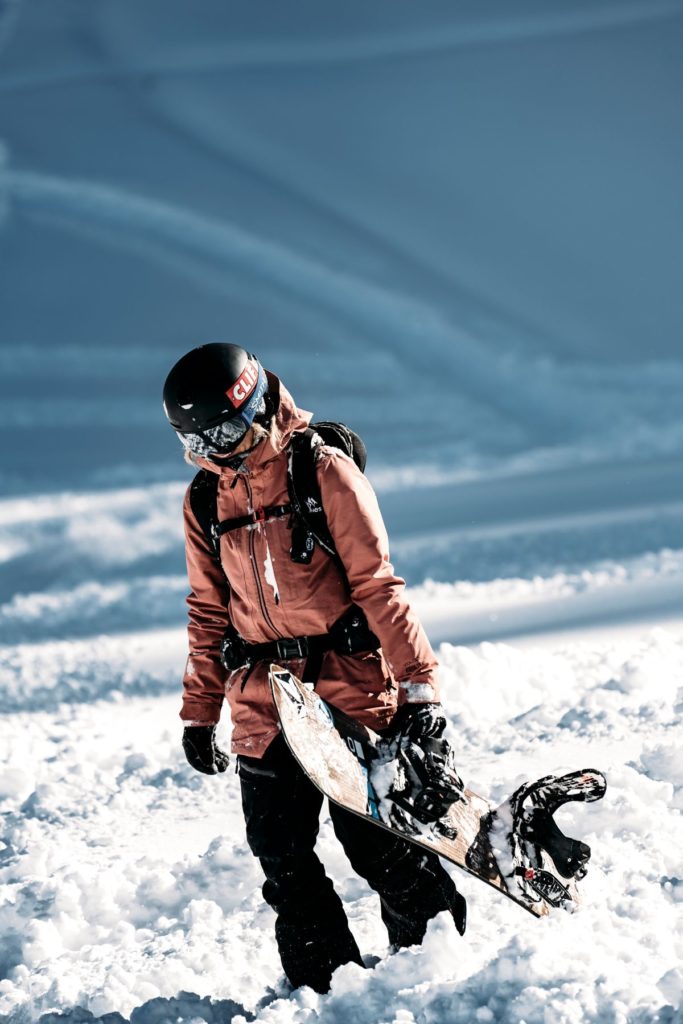
I wonder if we’re touching on another facet of the Elena Hight success story: her ability to see the bigger picture. Sure, for a good stretch Elena’s life lay within the confines of the halfpipe. But there was always a world beyond the lip. And while everything she’s done since that last competition in 2018 has focused on expanding her horizons, she was aware of the wider world in all its fragility before then.
“I’ve always been quite connected to nature. I grew up in Lake Tahoe, California, and being surrounded by nature just inherently makes you appreciate it a little bit more I think, and it wasn’t really until 2014, we had this really big drought year in California, and during the winter it was raining all winter in Lake Tahoe, in my home resorts and home mountains and so we had to cancel a bunch of events and move them. And that was the first time climate change was really affecting me on a personal level. And six months later, after the winter, we entered into this major drought in Lake Tahoe. The lake levels were lower than they had been in the last 75 years, our tourism was super affected, our economy was super affected. We began to have this huge issue with wildfires and beetle kill in our forests, and so really that year, seeing the full circle effect of climate change and climate warming in my home town, not only to this sport snowboarding, that I love so much, and not only on a personal level to me and my career, but also to my friends and family, my local community – that was the first time that I could see that this was such a big issue and that we really needed to start making changes now. And that led me to start working with Protect Our Winters and doing various different things to help support their message and use my voice to hopefully educate and inspire others to do the same. We have all had this idea of the climate warming but it felt like it was happening in the distant future. It’s quite shocking when you realise that it’s happening right now.”
It might seem exciting, glamorous even, to have at your disposal some of the best snowboard film makers in the world. But if you’re going to take on the mighty issue of climate change, we can’t all strap in and make a film – even one with a subliminal message like Blank Canvas.
The thing is, Elena isn’t just opening up the big world. She’s opening up the real world, the one we all live and play in. The world that’s full of the friendly, commercial mountains and modern lift networks people like me get their thrills in.
I wonder if we’re touching on another facet of the Elena Hight success story: her ability to see the bigger picture. Sure, for a good stretch Elena’s life lay within the confines of the halfpipe. But there was always a world beyond the lip. And while everything she’s done since that last competition in 2018 has focused on expanding her horizons, she was aware of the wider world in all its fragility before then.
“I’ve always been quite connected to nature. I grew up in Lake Tahoe, California, and being surrounded by nature just inherently makes you appreciate it a little bit more I think, and it wasn’t really until 2014, we had this really big drought year in California, and during the winter it was raining all winter in Lake Tahoe, in my home resorts and home mountains and so we had to cancel a bunch of events and move them. And that was the first time climate change was really affecting me on a personal level. And six months later, after the winter, we entered into this major drought in Lake Tahoe. The lake levels were lower than they had been in the last 75 years, our tourism was super affected, our economy was super affected. We began to have this huge issue with wildfires and beetle kill in our forests, and so really that year, seeing the full circle effect of climate change and climate warming in my home town, not only to this sport snowboarding, that I love so much, and not only on a personal level to me and my career, but also to my friends and family, my local community – that was the first time that I could see that this was such a big issue and that we really needed to start making changes now. And that led me to start working with Protect Our Winters and doing various different things to help support their message and use my voice to hopefully educate and inspire others to do the same. We have all had this idea of the climate warming but it felt like it was happening in the distant future. It’s quite shocking when you realise that it’s happening right now.”
It might seem exciting, glamorous even, to have at your disposal some of the best snowboard film makers in the world. But if you’re going to take on the mighty issue of climate change, we can’t all strap in and make a film – even one with a subliminal message like Blank Canvas.
The thing is, Elena isn’t just opening up the big world. She’s opening up the real world, the one we all live and play in. The world that’s full of the friendly, commercial mountains and modern lift networks people like me get their thrills in.

“As with all industries, we all have a footprint. It’s hard to balance that personal footprint as well as the industry footprint with making change. I think that honestly, specifically with the snow sports industry, the best thing the individual can do is support the companies and the brands that are making an effort to reduce their impact. I think you really can make a vote, as they say, with your dollars. I think the more we support these initiatives and these companies who are going above and beyond to do the right thing, the more that will become the norm. There’s a lot of resorts these days that are taking it upon themselves to reduce their impact, and the same with brands, you know, making big changes. So I think that as an individual who still wants to go out and ski, whether as a weekend warrior or someone who spends a lot of time in the mountains, researching and understanding the brands and the companies that are doing their part, and supporting those companies, is a huge step.”
Bluebird Backcountry comes to my mind. Nestled up in the Colorado Rockies, it is the USA’s first human-powered winter resort. There are no lifts, no groomed pistes. To ski down, you must first hike up. If not the shape of things to come, Bluebird and machine-free resorts like it, are undoubtedly a feature on the map for sustainable winter tourism.
“Absolutely, there are a lot of innovative ideas around – there are a lot of companies, like the Aspen Company, and Squaw Valley, who are moving towards carbon neutral, which is amazing. And a lot of resorts moving in that direction, using less plastic and a lot more renewables. Yeah it’s cool. I think that the reality is that the snow sports industry is going to suffer a lot with the warming climate and so the more rapidly we can make the change the better.”
And Blank Canvas, which is as far removed from commercial ski resorts as it’s possible to get, is a timely reminder that there’s a big wide world out there to be discovered.
“Yeah I think so, especially with the state of the world right now, people are wanting to get out and have the time and the space to be able to explore a little bit more. It’s super exciting, and hopefully this film comes out at a time that we inspire people to go and test their limits a little bit.”
Elena Hight is a champion snowboarder. She is also a champion of the transitions that lie beyond that U-shaped ramp. She demonstrates in a way, like few others before her have, that life is a series of changes. That it’s okay when one day closes, because another one dawns. She has proven that there is a whole world beyond the halfpipe.
Of course she is also a realist. So when a pretentious writer starts waxing lyrical about dawning days and new horizons, Elena is on hand to bring the conversation back to reality.
“I love springtime halfpipes,” she confides. “There’s nothing better than riding a slushy warm halfpipe, and so usually in the springtime I try to sneak into the old stomping grounds and keep up with the kids.”
Blank Canvas is widely available on 8 December across most streaming platforms.
“As with all industries, we all have a footprint. It’s hard to balance that personal footprint as well as the industry footprint with making change. I think that honestly, specifically with the snow sports industry, the best thing the individual can do is support the companies and the brands that are making an effort to reduce their impact. I think you really can make a vote, as they say, with your dollars. I think the more we support these initiatives and these companies who are going above and beyond to do the right thing, the more that will become the norm. There’s a lot of resorts these days that are taking it upon themselves to reduce their impact, and the same with brands, you know, making big changes. So I think that as an individual who still wants to go out and ski, whether as a weekend warrior or someone who spends a lot of time in the mountains, researching and understanding the brands and the companies that are doing their part, and supporting those companies, is a huge step.”
Bluebird Backcountry comes to my mind. Nestled up in the Colorado Rockies, it is the USA’s first human-powered winter resort. There are no lifts, no groomed pistes. To ski down, you must first hike up. If not the shape of things to come, Bluebird and machine-free resorts like it, are undoubtedly a feature on the map for sustainable winter tourism.
“Absolutely, there are a lot of innovative ideas around – there are a lot of companies, like the Aspen Company, and Squaw Valley, who are moving towards carbon neutral, which is amazing. And a lot of resorts moving in that direction, using less plastic and a lot more renewables. Yeah it’s cool. I think that the reality is that the snow sports industry is going to suffer a lot with the warming climate and so the more rapidly we can make the change the better.”
And Blank Canvas, which is as far removed from commercial ski resorts as it’s possible to get, is a timely reminder that there’s a big wide world out there to be discovered.
“Yeah I think so, especially with the state of the world right now, people are wanting to get out and have the time and the space to be able to explore a little bit more. It’s super exciting, and hopefully this film comes out at a time that we inspire people to go and test their limits a little bit.”
Elena Hight is a champion snowboarder. She is also a champion of the transitions that lie beyond that U-shaped ramp. She demonstrates in a way, like few others before her have, that life is a series of changes. That it’s okay when one day closes, because another one dawns. She has proven that there is a whole world beyond the halfpipe.
Of course she is also a realist. So when a pretentious writer starts waxing lyrical about dawning days and new horizons, Elena is on hand to bring the conversation back to reality.
“I love springtime halfpipes,” she confides. “There’s nothing better than riding a slushy warm halfpipe, and so usually in the springtime I try to sneak into the old stomping grounds and keep up with the kids.”
Blank Canvas is widely available on 8 December across most streaming platforms.
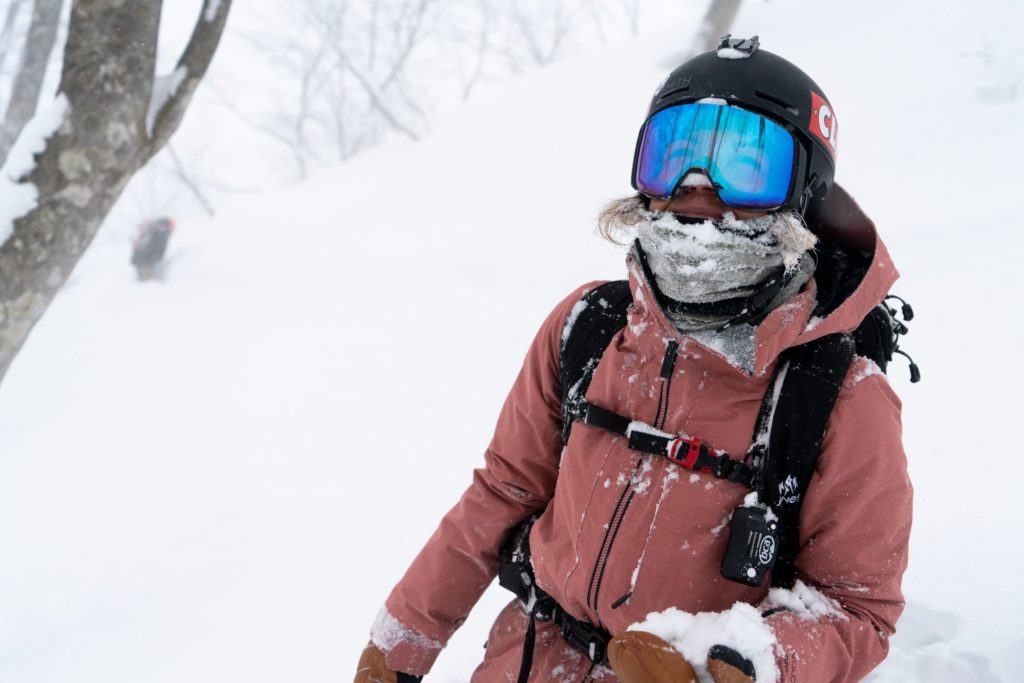
My thanks to Elena Hight her time and insight. For the latest on Blank Canvas go to tetongravity.com
You can keep up with Elena at the following:
Elena Hight Instagram: @elenahight
Elena Hight Twitter: @elenahight
Elena Hight Facebook: @ElenaHightSnowboarder
Related article: Stepping out of Bounds with Torah Bright
